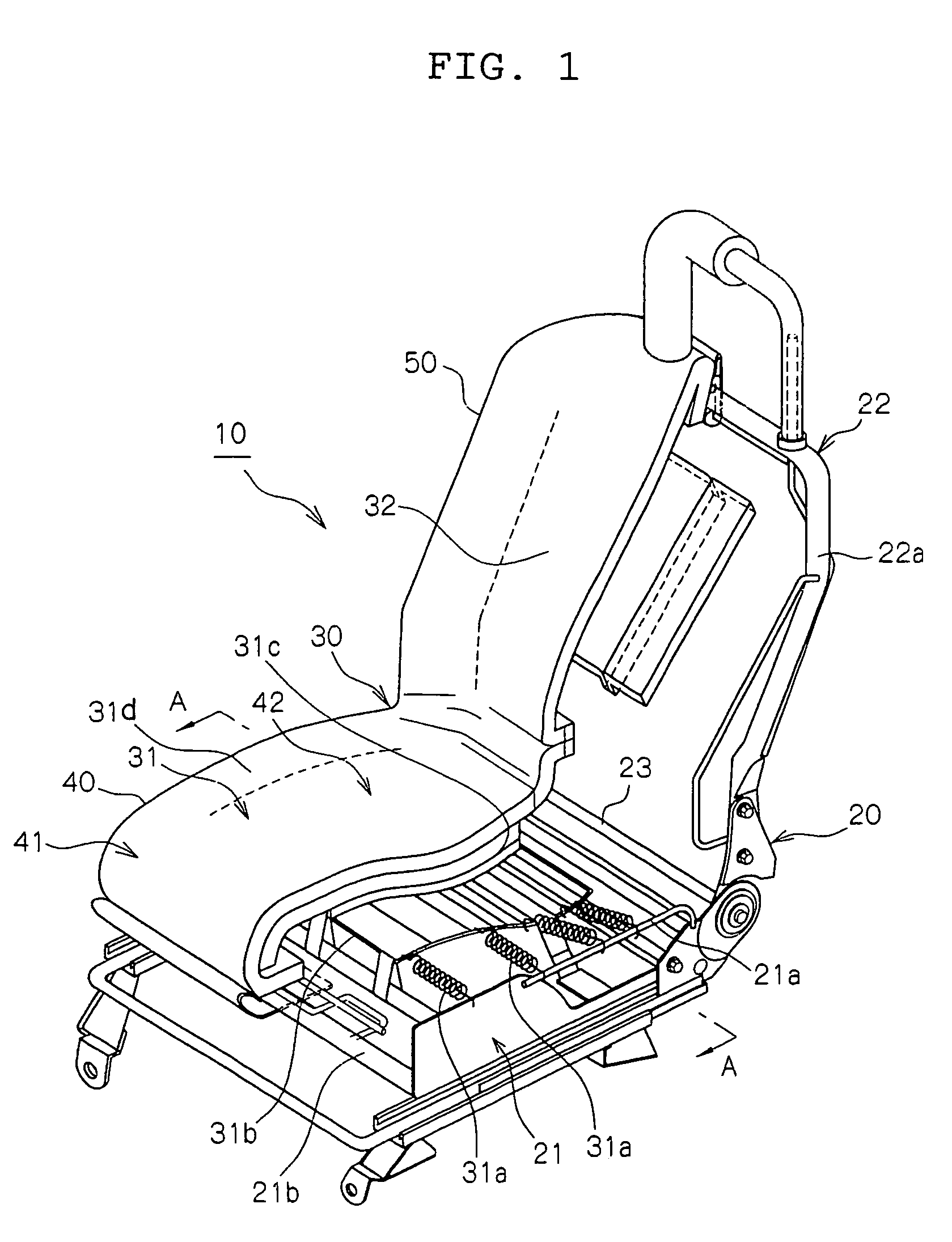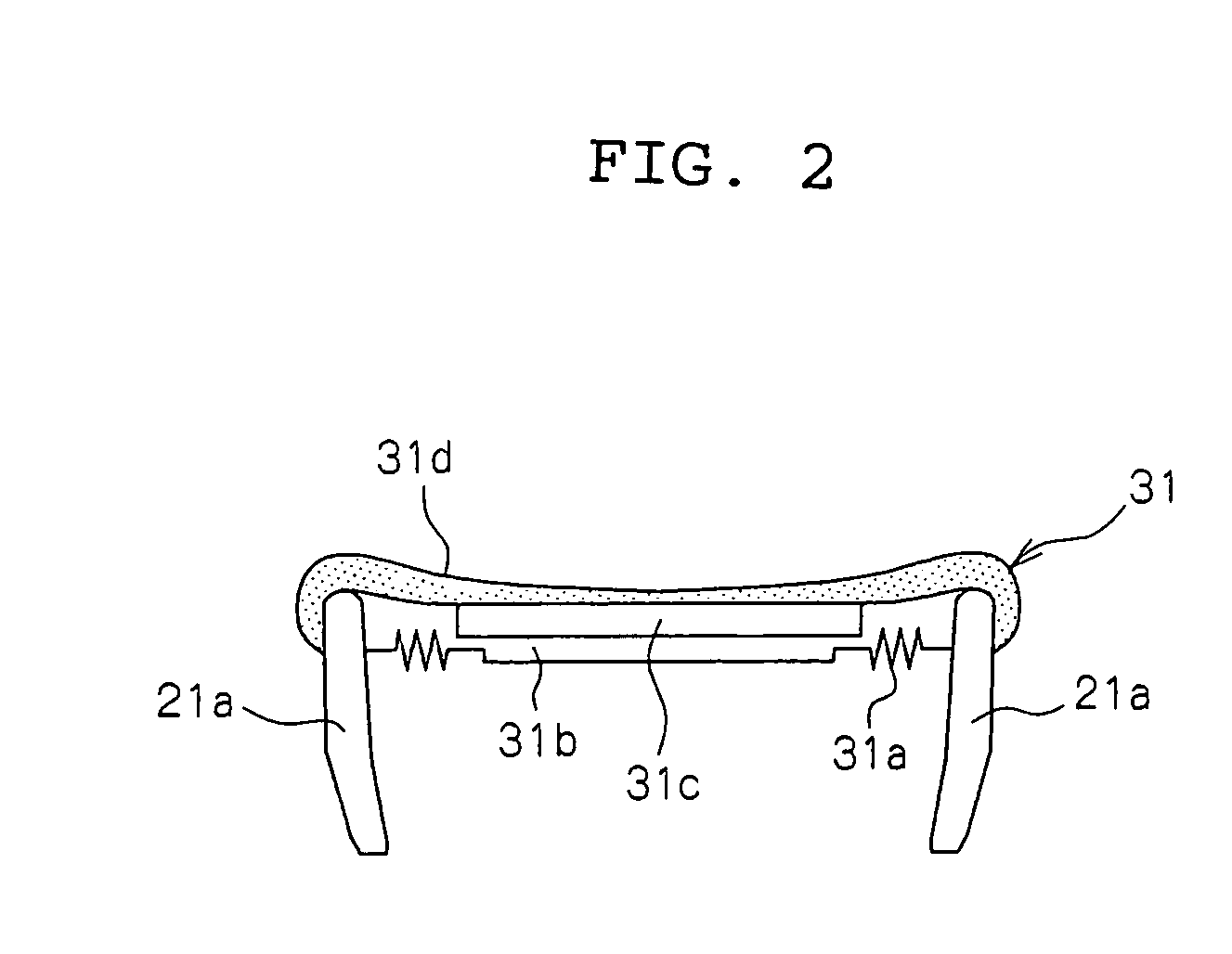Seat
a seat and seat technology, applied in the field of seats, can solve problems such as uncomfortable sensation, and achieve the effects of reducing numbness, reducing vibration, and improving riding comfor
- Summary
- Abstract
- Description
- Claims
- Application Information
AI Technical Summary
Benefits of technology
Problems solved by technology
Method used
Image
Examples
first embodiment
[0132]With reference to FIGS. 5 to 8, a description of a first embodiment of the present invention will be made hereinafter. As shown in FIG. 5, this three-dimensional knitted fabric 100 is structured by a three-dimensional structure that comprises a pair of ground knit fabrics 110 and 120 which are disposed so as to be separated from each other, and a large number of connection threads 130 which run back and forth between a pair of the ground knit fabrics 110 and 120 so as to join them together.
[0133]As shown in FIG. 6, the first ground knit fabric 110 can be formed, for example, by using a fabric which forms a mesh by a flat knit fabric organization (small cylinders) which uses threads formed by twisting short fibers, and which is continuous in both the wale direction and the course direction. Conversely, as shown in FIG. 7, the other ground knit fabric 120 can be formed into a knit fabric organization whose cylinders are larger than the first ground knit fabric 110, for example, ...
second embodiment
[0138]In a second embodiment of the three-dimensional knitted fabric, the three-dimensional knitted fabric 100 according to the above-mentioned first embodiment is manufactured so as to have recesses and projections in the same manner as a fifth embodiment which will be described later and shown in FIG. 17. And the second embodiment will be explained by using the reference numerals identical to those of FIG. 17. The three-dimensional knitted fabric 100 is manufactured such that a pair of ground knit fabrics 330, 340 are disposed so as to approach to one another in a course direction at a predetermined spacing so that recesses 150 are formed, and projections 160 are formed among the adjacent recesses 150. This can easily provide the three-dimensional knitted fabric with a structure which has a similar tendency to that of a spring constant characteristic (elastic compliance) of a muscle portion of a human body, and a spring constant which is smaller than that of a muscle portion of a ...
third embodiment
[0152]With reference to FIGS. 9 to 12, a third embodiment of the present invention will be explained, hereinafter. A three-dimensional knitted fabric 210 is structured by a pair of ground knit fabrics 220 and 230, and the connection threads 130.
[0153]A pair of the ground knit fabrics 220 and 230 is disposed so as to be separated from one another, and the connecting threads 130 are provided so as to run back and forth between the pair of the ground knit fabrics 220 and 230. The first ground knit fabric 220, as shown in FIG. 9, is continuously woven meshes, extends in a wale direction, and has strip-shaped fabric portions 221 which are separated from each other by one or plural wales. As a result, cylinders 222 are formed among the adjacent strip-shaped fabric portions 221, and as shown in FIG. 10, the respective strip-shaped fabric portions 221, and the connection threads 130 arranged in a region between the strip-shaped fabric portions and the other ground knit fabric 220 constitute...
PUM
 Login to View More
Login to View More Abstract
Description
Claims
Application Information
 Login to View More
Login to View More - R&D
- Intellectual Property
- Life Sciences
- Materials
- Tech Scout
- Unparalleled Data Quality
- Higher Quality Content
- 60% Fewer Hallucinations
Browse by: Latest US Patents, China's latest patents, Technical Efficacy Thesaurus, Application Domain, Technology Topic, Popular Technical Reports.
© 2025 PatSnap. All rights reserved.Legal|Privacy policy|Modern Slavery Act Transparency Statement|Sitemap|About US| Contact US: help@patsnap.com



